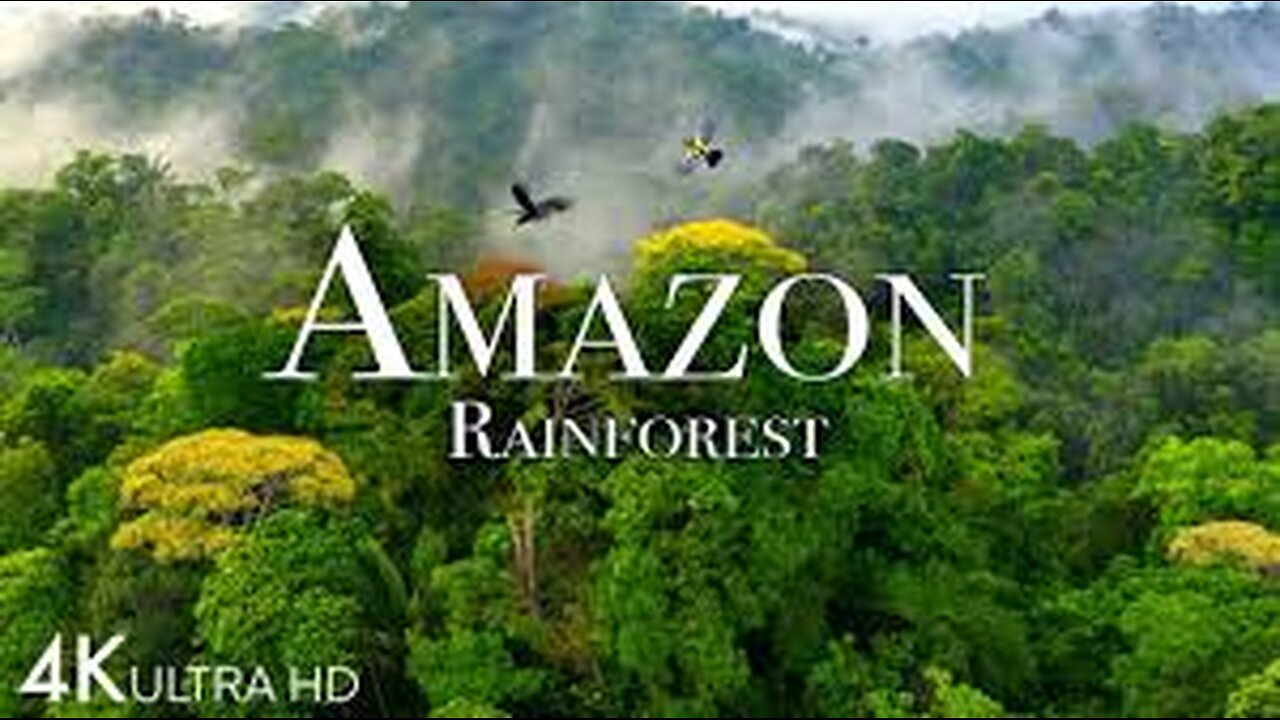Premium Only Content

The Wildlife Inhabiting the Heart of the Amazon Rainforest-Nature Videos of Amazon Jungle
The Amazon Rainforest is the largest rainforest in the world, covering an area of approximately 6.7 million square kilometers (2.7 million square miles) and spanning across multiple countries in South America, including Brazil, Peru, Colombia, Venezuela, Ecuador, Bolivia, Guyana, Suriname, and French Guiana.
Here are some key features and information about the Amazon Rainforest:
Biodiversity: The Amazon is home to an incredibly diverse array of plant and animal species. It is estimated that the rainforest contains around 390 billion individual trees representing approximately 16,000 different species.
Rivers: The Amazon River, the second-longest river in the world, flows through the rainforest, and its extensive network of tributaries makes it a crucial part of the ecosystem.
Climate: The climate in the Amazon is tropical and characterized by high temperatures and humidity. The region experiences a wet season and a dry season, with heavy rainfall during the wet season.
Flora: The Amazon Rainforest is known for its lush vegetation, including a vast variety of trees, plants, and flowers. Some iconic species include rubber trees, mahogany trees, and various types of orchids.
Fauna: The rainforest is home to an incredible diversity of wildlife, including jaguars, anacondas, capybaras, poison dart frogs, and a vast array of bird species. The Amazon River is inhabited by diverse aquatic life, including piranhas and pink river dolphins.
Indigenous Peoples: The Amazon is home to numerous indigenous communities, each with its own unique languages, cultures, and traditions. These communities have lived in harmony with the rainforest for generations, relying on its resources for their livelihoods.
Deforestation: The Amazon Rainforest faces significant threats from deforestation due to activities such as logging, agriculture, and cattle ranching. This poses serious environmental concerns, including the loss of biodiversity and the release of stored carbon into the atmosphere.
Preserving the Amazon Rainforest is crucial for global ecological balance and biodiversity. Efforts are ongoing to promote sustainable practices, conservation, and the protection of indigenous rights to ensure the long-term health of this vital ecosystem.
-
 6:46:07
6:46:07
Rance's Gaming Corner
12 hours agoTime for some RUMBLE FPS!! Get in here.. w/Fragniac
139K1 -
 1:30:48
1:30:48
Josh Pate's College Football Show
12 hours ago $6.25 earnedCFP Reaction Special | Early Quarterfinal Thoughts | Transfer Portal Intel | Fixing The Playoff
49.4K -
 23:55
23:55
CartierFamily
3 days agoElon & Vivek TRIGGER Congress as DOGE SHUTS DOWN Government
123K147 -
 5:43:44
5:43:44
Scammer Payback
2 days agoCalling Scammers Live
198K26 -
 18:38
18:38
VSiNLive
2 days agoProfessional Gambler Steve Fezzik LOVES this UNDERVALUED Point Spread!
145K17 -
 LIVE
LIVE
Right Side Broadcasting Network
10 days agoLIVE REPLAY: President Donald J. Trump Keynotes TPUSA’s AmFest 2024 Conference - 12/22/24
2,658 watching -
 4:31
4:31
CoachTY
1 day ago $28.43 earnedCOINBASE AND DESCI !!!!
187K11 -
 10:02
10:02
MichaelBisping
1 day agoBISPING: "Was FURY ROBBED?!" | Oleksandr Usyk vs Tyson Fury 2 INSTANT REACTION
107K14 -
 8:08
8:08
Guns & Gadgets 2nd Amendment News
2 days ago16 States Join Forces To Sue Firearm Manufacturers Out of Business - 1st Target = GLOCK
128K93 -
 10:17
10:17
Dermatologist Dr. Dustin Portela
2 days ago $19.32 earnedOlay Cleansing Melts: Dermatologist's Honest Review
163K14